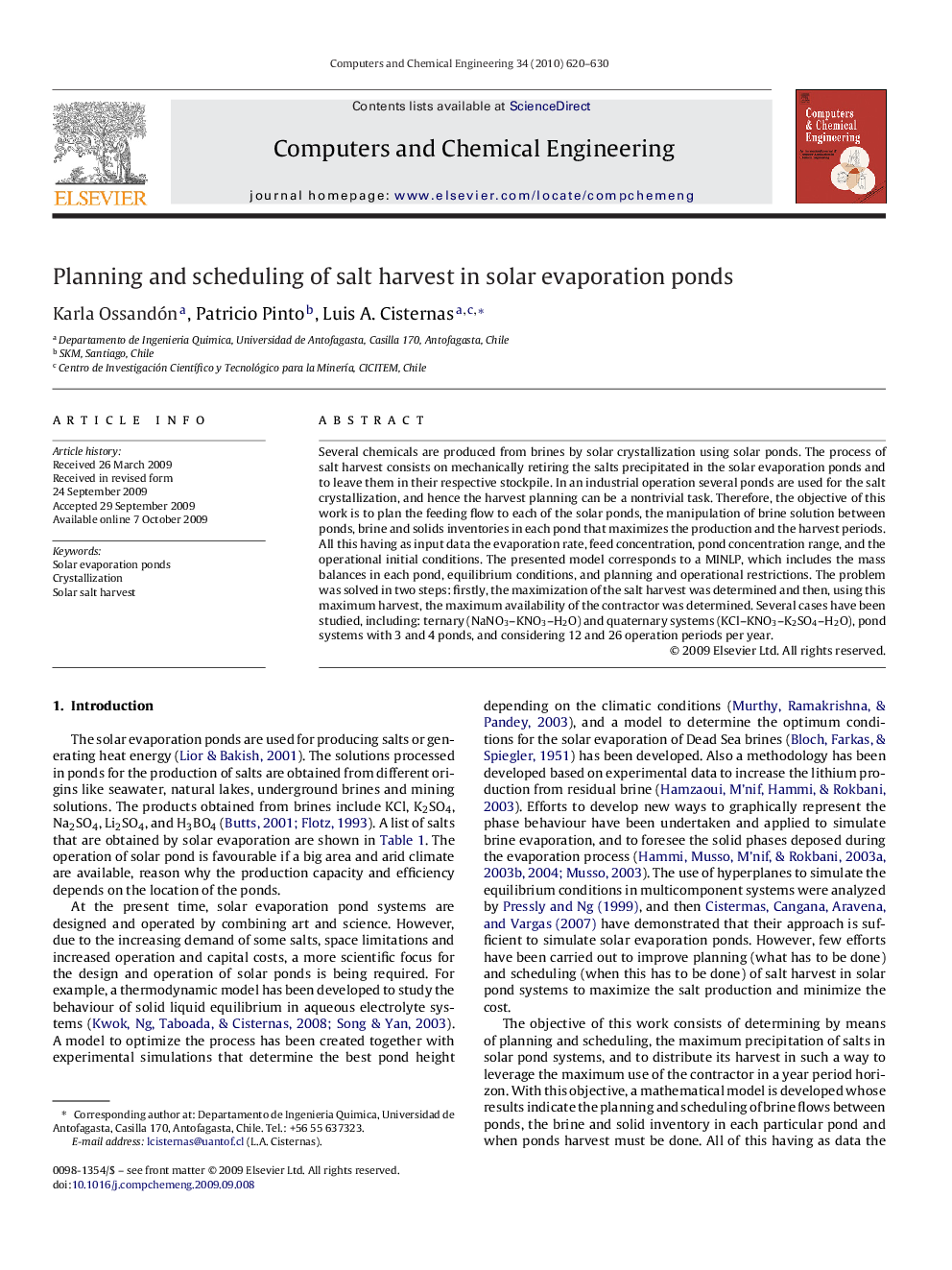| Article ID | Journal | Published Year | Pages | File Type |
|---|---|---|---|---|
| 173357 | Computers & Chemical Engineering | 2010 | 11 Pages |
Several chemicals are produced from brines by solar crystallization using solar ponds. The process of salt harvest consists on mechanically retiring the salts precipitated in the solar evaporation ponds and to leave them in their respective stockpile. In an industrial operation several ponds are used for the salt crystallization, and hence the harvest planning can be a nontrivial task. Therefore, the objective of this work is to plan the feeding flow to each of the solar ponds, the manipulation of brine solution between ponds, brine and solids inventories in each pond that maximizes the production and the harvest periods. All this having as input data the evaporation rate, feed concentration, pond concentration range, and the operational initial conditions. The presented model corresponds to a MINLP, which includes the mass balances in each pond, equilibrium conditions, and planning and operational restrictions. The problem was solved in two steps: firstly, the maximization of the salt harvest was determined and then, using this maximum harvest, the maximum availability of the contractor was determined. Several cases have been studied, including: ternary (NaNO3–KNO3–H2O) and quaternary systems (KCl–KNO3–K2SO4–H2O), pond systems with 3 and 4 ponds, and considering 12 and 26 operation periods per year.
